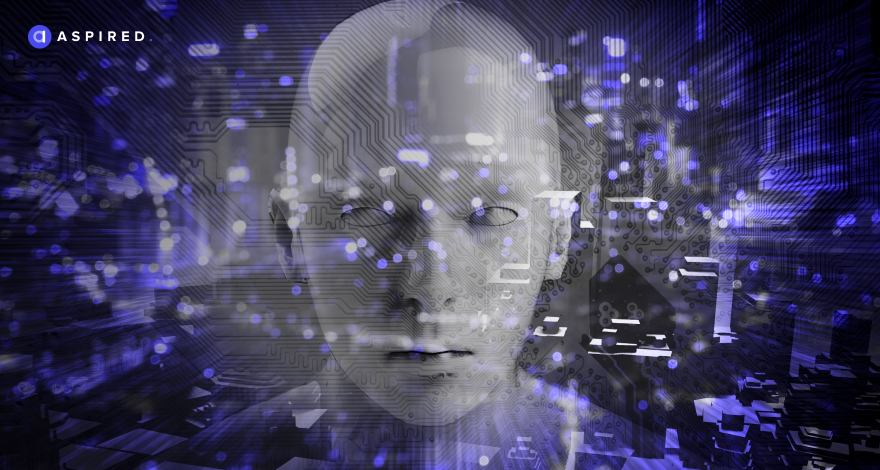Human beings possess the ability to learn from their past experiences, which in turn allows them to make better and more informed choices in similar situations. However, the abilities of learning and intelligence are no longer limited to the human brain as computers can now display intelligent behavior through AI, ML, and, more importantly, deep learning.
To understand how computer systems can replicate human intelligence, we must first get acquainted with Artificial Intelligence and Machine Learning.
AI and ML
AI is a term that’s been thrown around quite a lot recently, mainly due to the creation of AI systems such as ChatGPT and Midjourney, which can create expert-like content, Art, and code with relevant prompts. Alongside AI, we often hear the term machine learning as well; differentiating between the two, we’ve found that.
- Artificial Intelligence is all about replicating human intelligence in computer systems
- Machine Learning is the ability of computer systems to learn using large datasets
These two technologies are considered the cornerstones of the current digital revolution. They hinge on the ability to recognize patterns and predict relevant outcomes and predictions based on past data observations.
This human-like ability to learn from past experiences is where deep learning comes into play. These experiences are defined by the data acquired along with its quantity and quality, which determine how much the system can learn. So now the question arises what is deep learning, and how does it work? In today’s blog, we will answer this question and get acquainted with the world of deep learning.
Deep Learning Explained
Deep learning is a field of machine learning which centers around learning and improving itself by examining computer algorithms. Machine learning focuses more on simple concepts, whereas deep learning goes into the thick of it by working with artificial neural networks designed to replicate how humans think and learn.
Neural Networks
A neural network is simply a series of algorithms that recognize underlying relationships in data sets by mimicking the operation of the human brain. The complexity of neural networks has increased recently due to increased computing power and advancements in big data analytics. This has resulted in more sophisticated neural networks enabling systems to observe, learn, and react to complex situations much faster than humans.
Advancements in this technology have enabled computer systems to solve several pattern recognition problems, including language translation, image classification, and speech recognition, without human intervention.
From a technical perspective, deep learning is driven by artificial neural networks that comprise several layers. DNNs (Deep Neural Networks) are networks where each layer performs complex operations, including abstraction and representation of text, sound, and images. The result is a truly disruptive technology now being used on a wider scale than ever, as companies and the general public have gotten their hands on deep learning AI systems.
Now that you know deep learning and neural networks, it’s only fitting to learn how it works!
How Does it Work?
The basis of deep learning lies in its ability to recognize patterns and discover intricate structures within the data being received. By creating computational models that comprise numerous processing layers, the networks can create multiple levels of abstraction to represent data.
This can be explained with the example of a deep learning model called a convolutional neural network. This model can be trained with a large data set, such as millions of images containing dogs, from which it will learn and analyze the pixels within the images. Here it will classify pixels representing a dog’s defining features, such as eyes, ears, and paws, to recognize them within a new image.
From this, we understand that deep learning requires a large data set from which the system can autonomously learn relevant features, including sounds, text, and images, to recognize and recall them when faced with data that provides something similar.
Thus, deep learning systems can participate in speech recognition, computer vision, robotics, and machine translation tasks. On the surface, it may seem relatively simple, but going deeper into it, we realize that thousands of hyperparameters have to be set and tuned for these systems to produce effective and accurate results.
Real World Examples
Automated Driving
Automotive manufacturers have started integrating deep learning into vehicles to automatically detect objects on the road to recognize other vehicles, pedestrians, traffic signals, and obstructions to decrease accidents in self-driving vehicles.
Industrial Automation
Worker safety in terms of industrial hazards has also decreased to a great degree as deep learning has enabled the detection of people and objects that are within an unsafe distance of heavy machinery, by which it can produce alerts and safety warnings.
Household Electronics
The ability of speech recognition and translation of deep learning has led to the creation of household virtual assistants such as Amazon’s Alexa. These AI companions can communicate with human beings to operate household appliances, answer relevant questions, and even provide personalized options in purchasing decisions.
Medical Research
Deep learning is also being integrated into medical technology to detect harmful diseases. For example, high-tech microscopes are being used to provide high-dimensional data, which is then used to train deep-learning models to accurately detect cancer cells and thus help cancer researchers.
Conclusion
Deep learning is set to shape the future of the digital world, as seen by the widespread adoption of AI models that bring immense value to organizations. Although deep learning hasn’t reached its true potential yet, the innovations brought about by it show a great deal of promise.
With the rise of technologies such as deep learning and ML, the race toward the AI revolution has begun. As a result, numerous organizations compete to acquire the industry’s best AI engineers and developers. Companies aiming to join this battle can now take a much easier route to the hiring process by simply contacting Aspired.
Aspired is a remote staffing agency that can handle all your hiring troubles by providing you with pre-vetted remote talent that can elevate your tech business to meet the needs of the oncoming AI revolution.

 Clients
Clients
 Processes
Processes
 Blog
Blog










